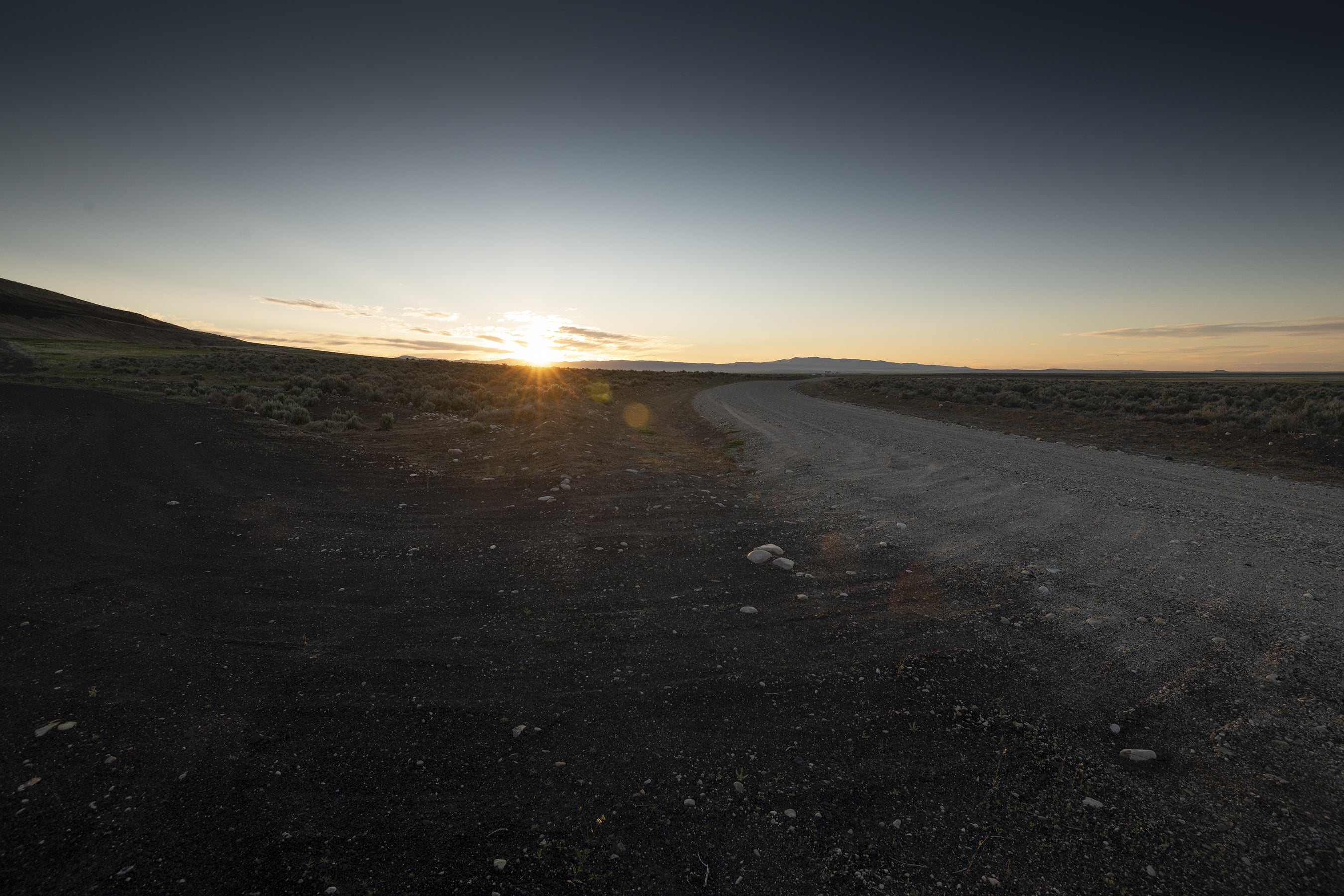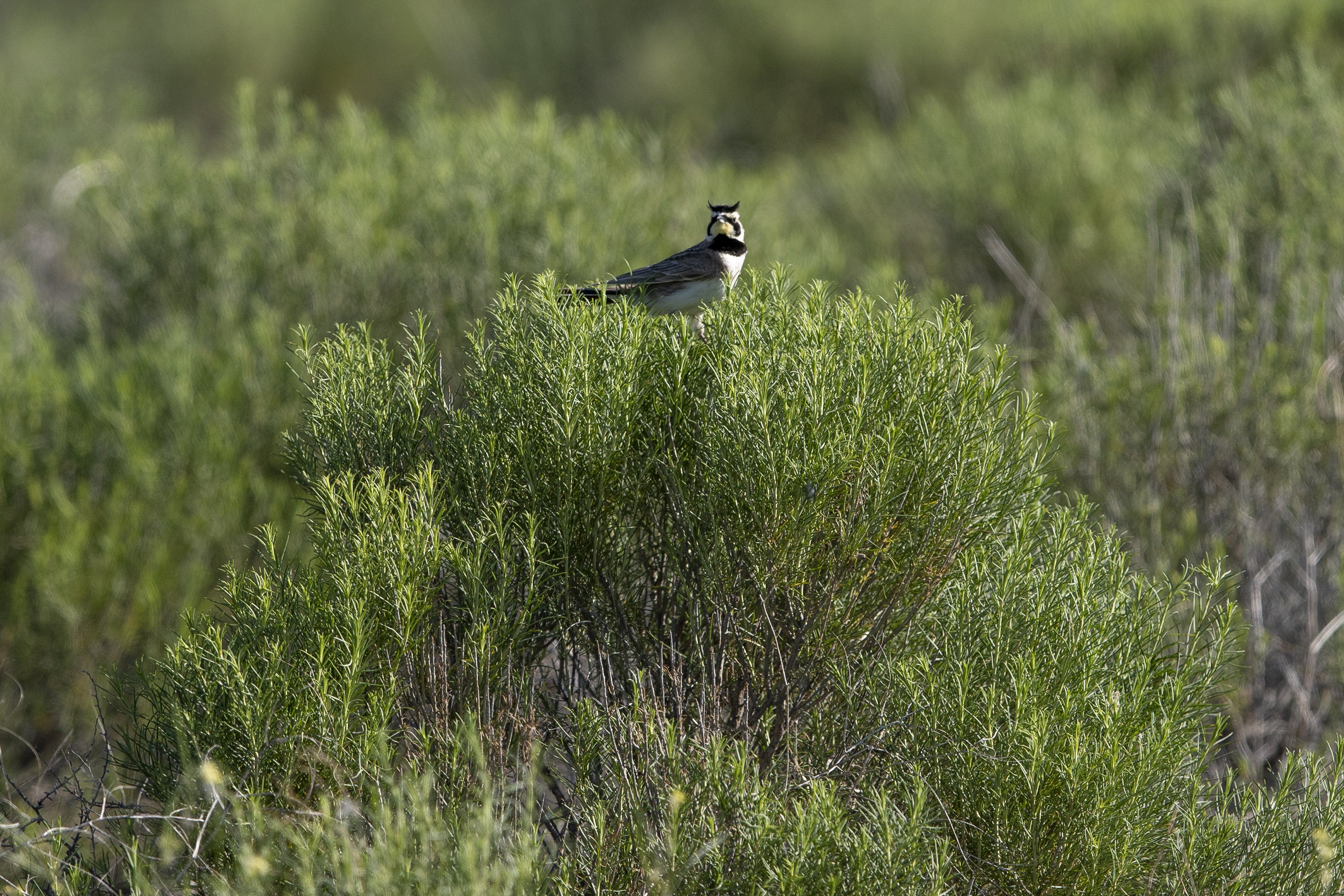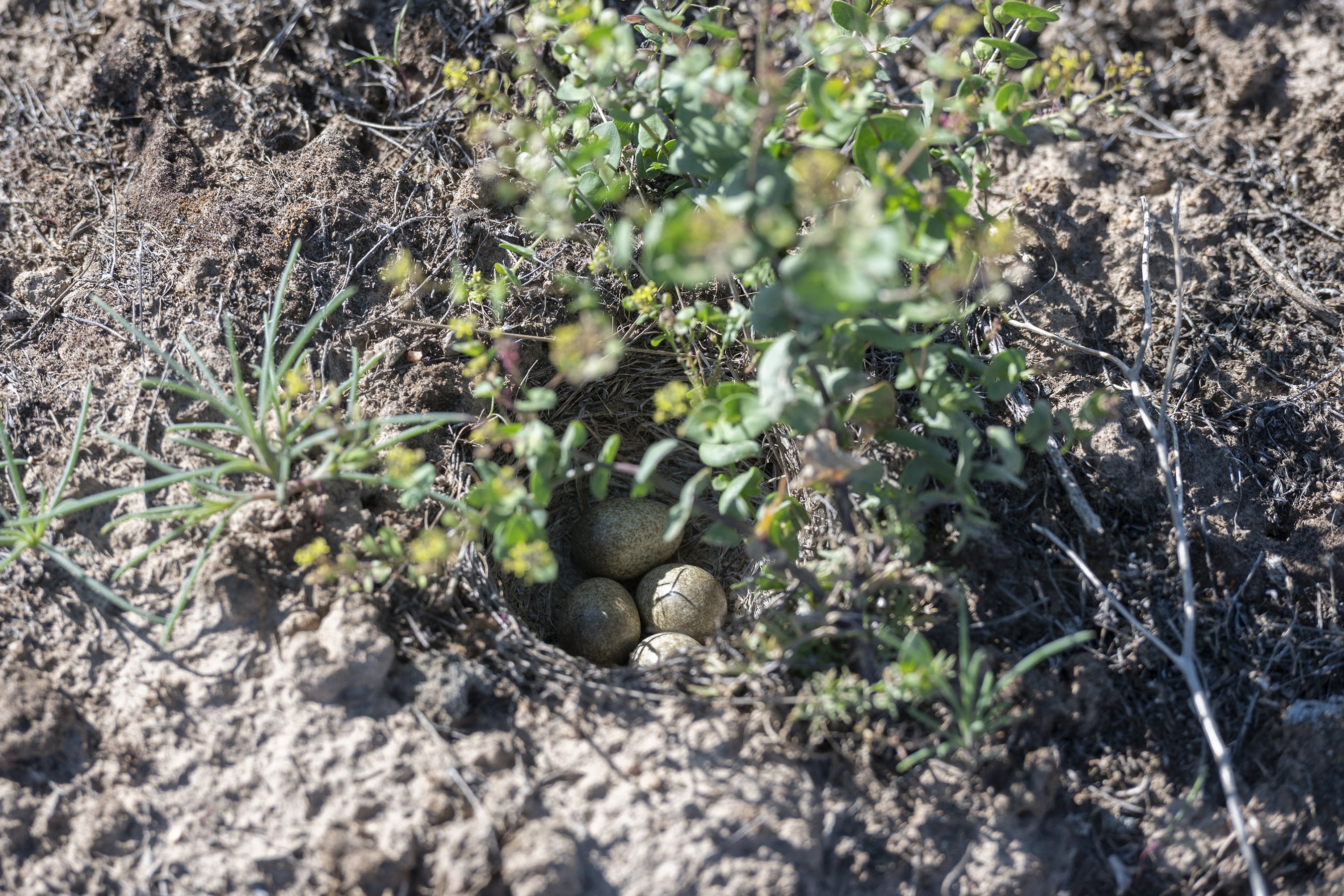
Each year, hundreds of visitors journey to the Morley Nelson Snake River Birds of Prey National Conservation Area, located 35 miles south of Boise along the Snake River. They hike, mountain bike, camp or explore the vast public lands on horseback or off-road vehicles. Some visitors to the 485,000-acre site come to hunt and still others simply wish to observe the 800 pairs of raptors that call the canyonlands home.
And then there’s the handful of researchers like Boise State’s own Madeline Aberg. She eschews the breathtaking canyon views and soaring raptors for a much more ordinary sight: a glimpse of the common horned lark, which builds its nests on the ground.
Aberg is a graduate student in Boise State’s Ecology, Evolution and Behavior doctoral program, studying the social and ecological effects recreation has on wildlife. In 2018, the Iowa native landed at Boise State following jobs at two national parks – first leading educational programs in Rocky Mountain National Park, then studying the social and ecological implications of winter tourism at Denali National Park through the Geoscientists in the Parks program.
“It was the first research project I was a part of that linked social sciences and ecology, and it gave me a chance to talk with recreationists about their expectations and experiences,” she said. “When I started looking at grad programs, this [Boise State] project was advertised, looking at important ecological questions with the social aspect as well.” For Aberg, it clicked.
Although native to North America, horned larks are widespread in Europe, Asia and northern Africa. Yet their numbers are rapidly declining and for being such a common species, very little is known about their breeding habits, especially in Idaho.
“Sometimes these species we think of as being as fine, or common and widespread, can still be impacted by activities,” Aberg said. “This is one of the first times we’ve studied them in this area. We’re getting basic information on them here in the shrub-steppe outside of Boise: when they’re initiating nesting, when they’re hatching.”
“As our human population continues to grow, including locally here in Southwest Idaho but also worldwide, there are more and more potential interactions between humans and the environment,” explained Jay Carlisle, research director of the Intermountain Bird Observatory and Aberg’s advisor. “While some of these can be quite positive, many studies have demonstrated that some of our actions, including recreation in publicly-owned protected areas, can have serious effects on population dynamics for at least some wildlife species. Thus, can we mitigate some of these impacts while still enjoying our public lands?”
That is the question Aberg seeks to answer. Since mid-March, she has been in the field most days, hunting for horned larks – figuratively speaking – in two specific sites within the conservation area: one considered low recreation, the other a high-recreation site.
Her goal is to find nests to monitor for fledgling success – in other words, to see how many eggs hatch and whether the chicks survive long enough to leave the nest, which happens 8-10 days after hatching.

“If we find the nest empty during one of our checks, we look for signs of predation – eggshells, matted vegetation around the nest, the nest being pulled out of the nest cup,” she explained. “If there are no signs of predation and the nest is at the expected fledging date, we consider it successful. It’s unfortunately pretty difficult to catch the nest right as the chicks are leaving, so we have to use past monitoring and clues to determine what happened.”
Aberg is also trying to determine how long the horned lark breeding season lasts – another unknown in Idaho. Horned larks can breed multiple times in a season. If a nest fails or after their fledglings are able to fend for themselves, they can start over and rear another brood.
“We’re not sure how long the breeding season will continue, but as of late June we are still seeing birds building nests and laying eggs,” she said.

Once the datasets are collected, Aberg and her colleagues at Boise State and the Intermountain Bird Observatory hope to be able to shed some light on whether human recreation impacts fledgling success.
Researchers are hoping to provide a comparison to the long-billed curlews who are studied in these same sites “to see if they’re also being affected by human disturbance,” Aberg said.
Long-billed curlews have suffered as much as a 90 percent decrease in population in parts of Idaho since the 1970s, partly due to human disturbance and poaching. Even abundant species like the horned lark have declined in population by as much as 60 percent over the past 50 years, according to one study.
“Our hope is that by better understanding the values and demographics of the recreationists using public lands, and simultaneously studying bird populations to gauge their status, we can complement ongoing and prior studies in the region to provide management relevant information to land and wildlife management agencies,” Carlisle said. “Specifically, might we identify time periods or areas in which birds might be especially vulnerable?”
